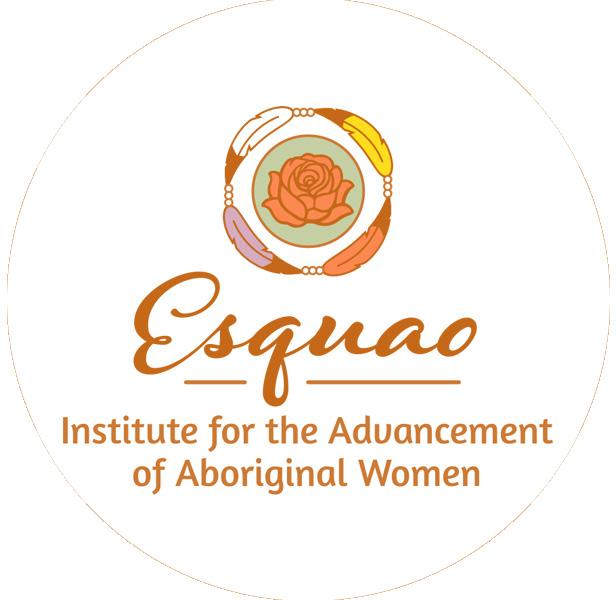
4 minute read
For the Love of Numbers and Language
Explore the powerful relationship between patterns and numbers in language through a comprehension similar to Indigenous perspectives, called enactivism.
Patterns and relationships between numbers have always fascinated Florence Glanfield.
Advertisement
She saw them in the card games she played with her grandmother as a young Métis girl growing up in rural Alberta. She saw them in the notes of music. And she saw them in the piles of popsicle sticks that her firstgrade teacher set before the class as part of a counting exercise.
Those patterns instilled a life-long love of mathematics that eventually led to a doctorate degree, and her current jobs as both a professor in mathematics education and ViceProvost of Indigenous Programming and Research at the University of Alberta.
It’s an interest that has also garnered many awards. Dr. Glanfield, who is a citizen of the Métis Nation of Alberta, received a 2022 Esquao Award, which is given by the Institute for the Advancement of Aboriginal Women in Alberta to honour the achievements and contributions of Indigenous women in that province.
Her research has focused on a type of cognition called enactivism that is similar to Indigenous perspectives. “It really is about learning and recognizing that all of your experiences and your interactions bring forward meaning for a human being in any one moment,” says Dr. Glanfield.
It’s about recognizing patterns like the fact that the numbers on playing cards relate to each other in different ways, and then building on that knowledge to solve complex mathematical equations.
Dr. Glanfield’s late mother, Betty Victoria Wylie, was Métis and her father is of English descent. Dr. Glanfield grew up in the hamlet of Wandering River and town of Lac La Biche, about 200 kilometres south of Fort McMurray, closely connected to her Métis family—grandparents, great-grandparents, aunties, uncles, and cousins.
When she was five years old, Dr. Glanfield told her mother she wanted to be a teacher. “I wanted a blackboard from Santa,” she said in a recent interview.
“My mother did a lot of counting games with me when I was little,” she says. “She was very quantitative in her thinking. She would encourage me to look for patterns in all kinds of things, and my grandmother was similar. We played a lot of card games like crib and whist. I was always looking at combinations of numbers and at patterns in numbers.”
With the intervention of the local priest, she was permitted to attend the small francophone school in her community before she turned six, the normal age for admissions.
It was the time of the Sixties Scoop. There were other Indigenous students in the tiny school, but, by and large, they were living with settler families after having been removed from their homes.
When the school regularly demanded to know her heritage, her father wrote back to say she was Canadian. The school objected, stating that Canadian isn’t a heritage. “So my dad would write back saying, ‘well, her mother was born in this place we call Canada. Her father was born in this place we call Canada. Therefore, she is a Canadian.”
From the start, math was one of her favourite subjects. This passion had much to do with her Grade 1 teacher, whom she describes as being “way ahead of her time.”
The teacher used popsicle sticks to explain counting. “We would have to group them in groups of five. If my number was seven popsicle sticks, she would put five plus two is equal to seven on the board,” says Dr. Glanfield. “We weren’t working on worksheets. We were actually doing something and building. And I don’t know what it was like for my peers, but I know for me, this is where I developed my love for learning.” She enjoyed math all the way through school. “I really, really loved numbers and algebra and I could see the relationships between them.”
After obtaining a teaching degree, Dr. Glanfield taught math to Indigenous and non-Indigenous students at a high school in Fort McMurray.
She loved the job. But “at one point,” she says, “I looked around the room and I realized there were no female administrators in my high school, and certainly no visibly Indigenous teachers or leaders there.”
So, she returned to university to do a master’s degree in educational administration and took graduate-level courses in mathematics education. Then she worked as a self-employed mathematics education consultant with opportunities to work with Alberta’s education ministry, developing mathematics curricula and assessments, and working with schools, teachers, and ministries of education in other parts of Canada, including the Northwest Territories, Yukon, and Nunavut.
“I met some Elders and we were talking about Indigenous languages and mathematics. And this Elder was telling me how the numbers were constructed in Dene.” While most of the world had adopted a base 10 counting system, which is based on the number 10, the Dene counting system is based on the number 6.
Dr. Glanfield realized that numbers in the French language—the language in which she was taught math in the primary grades—are also not based on the number 10. They are based on the number 20. These ideas would make it more difficult for children who are learning mathematical concepts in English. Imagine if your first language was an Indigenous language whose numbers are based in numbers other than 10, or your first language was French or another language.

“The experience with that Elder was the beginning of my journey and planted in my head the idea that there might be some relationship or differences in what we teach about math in school and different languages,” says Dr. Glanfield. It led her to explore different theories of learning, and knowing, and being, and Indigenous knowledge systems across North America and in East Africa.
“What I have learned is that worldviews/knowledge systems are embedded in languages,” she says. “The way that English is structured is mostly about nouns. And nouns are things that you can be tested on. But in Indigenous languages, it’s mostly verbs. So, it’s about process and relationality. And what would that mean for learning if you focused on relationships and not just these discrete nouns?”
It was a realization that made her think about decolonizing education.
“It’s why I think it’s really important that we teach Indigenous languages,” says Dr. Glanfield. “Because we’ve been told, through colonization and through residential schools, that Indigenous knowledges are not important. But it is critically important to your understanding, your actions as a human being, in relation to everything.”

For Dr. Glanfield, one could also say this about her first love— mathematics.









